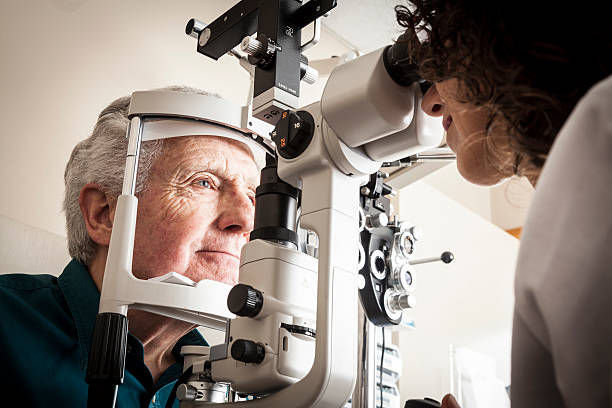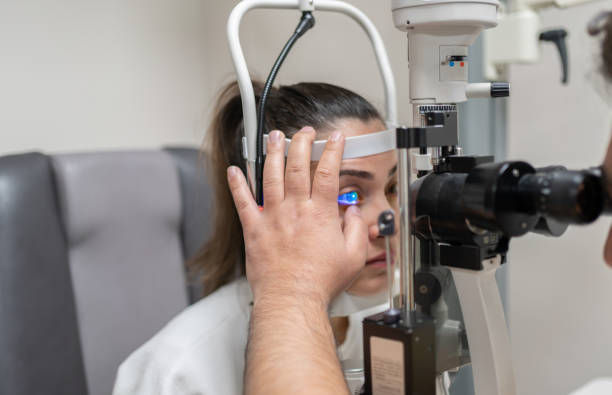Common Eye Conditions and How to Prevent Them
- holisticwellnes8
- Mar 19
- 4 min read
Our eyes are among the most critical organs of our body, allowing us to perceive the world around us. Unfortunately, various eye conditions can threaten our vision. Understanding these conditions and knowing how to prevent them is essential to maintaining good eye health. This blog will explore some common eye conditions and provide practical advice on how to prevent them.
Cataracts
Cataracts occur when the lens of the eye becomes cloudy, leading to blurred vision and, if left untreated, potential blindness. They can develop naturally with age or be caused by other factors such as diabetes, smoking, and prolonged exposure to ultraviolet (UV) light. To prevent cataracts, it's essential to protect your eyes from UV rays by wearing sunglasses with UV protection. Maintaining a healthy diet rich in antioxidants, such as vitamins C and E, can also support eye health. Regular eye check-ups with an eye doctor in Cleveland will help detect early signs of cataracts, allowing for timely intervention.

Glaucoma
Glaucoma is a group of eye conditions that damage the optic nerve, often due to increased pressure within the eye. If untreated, glaucoma can lead to irreversible blindness. Risk factors for glaucoma include age, family history, and diabetes. Preventive measures include regular eye exams to monitor intraocular pressure and optic nerve health, particularly for those at higher risk. Eating a balanced diet with omega-3 fatty acids and exercising regularly can also contribute to overall eye health. Avoiding smoking will help too, as smoking is a known risk factor for glaucoma.
Age-Related Macular Degeneration (AMD)
Age-Related Macular Degeneration (AMD) affects the macula, the part of the eye responsible for sharp central vision. AMD is a leading cause of vision loss in older adults. Risk factors include age, genetics, smoking, and diet. To prevent AMD, it's essential to maintain a diet rich in leafy greens, fish, nuts, and fruits—foods that provide essential vitamins and nutrients for eye health. Regular eye check-ups can detect early signs of AMD, enabling preventive or corrective treatments. Avoiding smoking and managing overall health conditions like hypertension can also lower the risk of developing AMD.
Diabetic Retinopathy
Diabetic retinopathy occurs in individuals with diabetes when high blood sugar levels damage the blood vessels in the retina. This condition can lead to vision loss if not managed properly. Preventive measures involve proper diabetes management through diet, exercise, and medication adherence. Regular eye exams specifically designed to monitor diabetic retinopathy are crucial for early detection and treatment. Maintaining stable blood sugar levels and controlling blood pressure will minimize the risk of developing diabetic retinopathy.
Dry Eye Syndrome
Dry Eye Syndrome happens when the eyes don't produce enough tears or the quality of tears is poor, causing irritation and discomfort. Symptoms of common eye conditions such as Dry Eye Syndrome include irritation and discomfort, which can be exacerbated by aging, environmental conditions, prolonged screen time, and certain medications. To prevent dry eye syndrome, it's essential to take breaks from screen use and ensure proper lighting while using digital devices. Using artificial tears or lubricating eye drops can help alleviate symptoms. Staying hydrated and maintaining a balanced diet that includes omega-3 fatty acids can improve tear quality. Regular eye check-ups can identify underlying causes and recommend appropriate treatments.

Conjunctivitis (Pink Eye)
Conjunctivitis, commonly known as pink eye, is an inflammation of the conjunctiva—the clear tissue covering the white part of the eye and the inside of the eyelids. It can be caused by viral or bacterial infections, allergies, or irritants like smoke and pollutants. Preventive steps include practicing good hygiene, like washing hands regularly and avoiding touching the eyes. Using clean towels and avoiding sharing personal items can help reduce the risk of contracting conjunctivitis. For those prone to allergies, managing environmental triggers and using allergy medications can prevent allergic conjunctivitis. Wearing protective eyewear in polluted or high-risk environments is advisable too.
Myopia (Nearsightedness)
Myopia, or nearsightedness, is a common condition in which close objects appear clear, but distant objects are blurry. It can be caused by genetic factors or environmental influences such as extensive screen time without breaks. Preventive actions include encouraging healthy visual habits like taking regular breaks from screens and using corrective lenses such as glasses or contact lenses prescribed by an eye doctor. Ensuring proper lighting while reading or doing close-up work will help reduce eye strain. Regular eye exams can help detect myopia early, allowing for effective management and prevention of worsening symptoms.
Eye Infections
Eye infections can result from bacteria, viruses, fungi, or parasites. They can cause redness, swelling, pain, and discharge. Preventive measures include practicing good hygiene, avoiding touching or rubbing the eyes, and using clean materials like towels and pillowcases. Using protective eyewear in high-risk environments, such as swimming pools or dusty workplaces, can prevent infections. Ensuring contact lenses and solutions are used correctly will reduce the risk of developing eye infections associated with contact lens use. Regular eye exams can identify potential infections early and provide appropriate treatments.
Conclusion
Maintaining eye health is crucial for preserving vision and quality of life. Preventive actions like regular eye check-ups, proper nutrition, good hygiene practices, and lifestyle adjustments play significant roles in safeguarding our eyes against common conditions such as cataracts, glaucoma, AMD, diabetic retinopathy, dry eye syndrome, conjunctivitis, myopia, and infections. By staying informed and proactive in eye care, we can protect our eyes and enjoy clear vision longer. Remember, healthy eyes contribute greatly to overall health and well-being, making it essential to prioritize eye care.



Comments